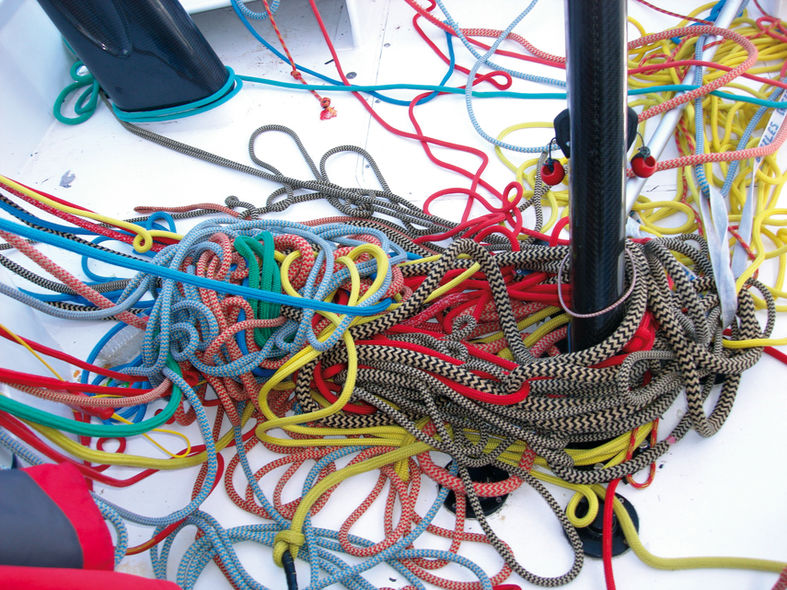
Issue #: 142
Published: July / August 2015
- Price per issue - digital : 5.40€Digital magazine
- Access to Multihulls World digital archives Digital archives
Slowly but surely, the nature of running rigging is changing. Although not as obvious as the modifications to sail cloth or hull shapes, the cordage on our boats has seen some real evolution in recent years. So, are up to date with all the latest trends? Before you test everything in this summer’s exams, Multihulls World has been revising for you, and can lend you our revision notes!
It feels like a lifetime ago that sails were made of “cotton”, and that sheets and halyards were “elastic”. Everything has become rigid, nothing flexes, and everything is transformed into speed. Even better, fiber has expanded its kingdom into domains until recently unknown: shrouds, stays, guardwires, shackles and even cleats are now involved. Lightness, resistance, mechanical efficiency all combine as much as possible to replace metal which rusts, grates and jams, with these new “strings”… But you don’t need to be doing the America’s Cup or the Vendée Globe Race to benefit from the huge advances brought about most often, it’s true, by the crazy racers. How nice it would be to replace the shackles on your mainsheet blocks with Dyneema. Silence…
Did you know that there is more to be gained in weight by swapping your stainless steel rigging for Kevlar or PBO than opting for an expensive carbon fiber mast? But most importantly, the pleasure of being able to keep your luff tension tight! And then a bit of aesthetics does no harm: with assorted colors, sail handling can be easier, and your crew will thank you! All you need to do is use the right man for the job, so your cleats, sails, blocks and chainplates hold fast… But that’s another story! Let’s get back to the point, or rather to our cordage. There are many factors involved, and the possibilities are infinite, so let’s have a look at the main characteristics which need to be considered:
- The core: this is the real heart of the rope, and it is this which determines its resistance or elasticity, its suppleness or stiffness. It all depends on the nature of the fibers of which it is made, their number, the order they are in, and of course, their final overall diameter.
- The sheath: the protective layer which shields the core from the aggressive action of cleats, from the friction of blocks, and allows your hands to get a better grip. The material it is made from is of course important, and its characteristics are determined above all by the number of strands that it is made up of. In effect, the more numerous the strands, the more the rope is resistant to abrasion.
- Elongation is a measure of the variation in length of a rope as a function of the load it is supporting. Within the same area, creep is how much a rope deforms irreversibly under load. It is contrary to elongation, in that it is irreversible. All new halyards or sheets creep during initial use, then become stable.
- The breaking strain gives the value at which the material will sever. This is not to be confused with maximum recommended loads, which take account of a not-insignificant safety factor compared to the former figure.

There are many ropes on board our boats, and each has its purpose… Even on a cruising boat, they can improve the look!
Note that stiffness and resistance must not be confused. This is why our mooring warps are large in diameter. It’s to ensure good resistance through their diameter and a ...
What readers think
Post a comment
No comments to show.